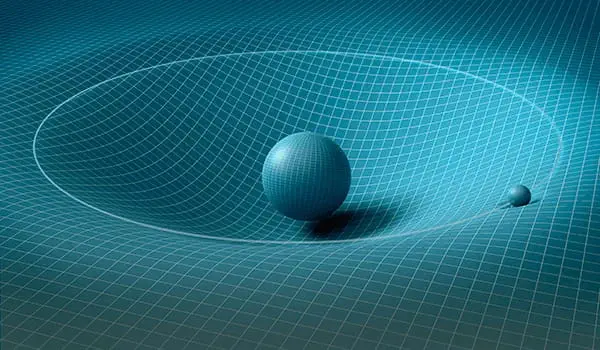
SPONTANEOUS SYMMETRY BREAKING (spring 2018)
This spring's Delta ITP Course Advanced Topics in Theoretical Physics aimed at advanced Master’s students, PhD and postdoctoral researchers, is built around the general theme of "Spontaneous symmetry breaking".
Lectures will take place on Mondays at 11:15-13:00, followed by a study/exercise session 13:45- end.
The course will be divided into three 5-week modules; for each one there are four lectures (2hrs each) and four exercise sessions (3hrs each). At the end of the module there is an exam. All exams are pass/fail. You need to pass all three exams to receive credit for the course.
Please register here before the course begins, even if you do not take the course for credit. Note that we cannot process your grade or send important notices if you have not already registered.
Travel Cost Reimbursement:
Students who do not have an OV-card from the Dutch government can have their travel costs reimbursed from Delta ITP.
Please contact your local organizer (below) for details.
- Module 1
Jasper van Wezel (UvA): Spontaneous symmetry breaking in the context of Condensed Matter Physics
Lectures: Feb 5, 12, 19, 26
Exam: Mar 5
Location/Room: Amsterdam, Science Park 904, room G5.29 of the SP904 building at the UvAAbstract: In this course, we will learn to recognise the many ways in which symmetry breaking impacts physics. We will use the context of condensed matter physics to discuss the general principles of which different types of symmetry exist, which can or cannot be broken, how symmetry breaking is described and what its many implications are. We will also introduce some group theoretical methods to analyse which order parameters and conjugate fields may be expected to arise in any given theory, and how many type A or type B Nambu-Goldstone modes result from them. Finally, we will discuss the similarities and differences between symmetry and gauge freedom, and see how the Higgs mechanism and various associated effects are related to symmetry breaking.
- Module 2
Alexey Boyarsky (UL): Spontaneous symmetry breaking in the Standard Model of particle physics
Lectures: Mar 12, 19, 26, Apr 9 [Apr 2 is Easter]
Exam: Apr 16
Location/Room: Leiden, Huygens Laboratory HL211 on March 12th; Huygens Laboratory HL226 on the remaining daysAbstract: The module focuses on spontaneous symmetry breaking and Higgs mechanism in the Standard Model. The students will learn:
— how and why the SU(2) xU(1)symmetry was introduced, what are its direct phenomenological manifestations
— the interplay between the chiral structure of the SM and Higgs mechanism
— anomaly cancelation in the Standard Model
— the differences in the structure of mass matrices of leptons and quarks, the origin and phenomenological manifestation of CP violation, relation with baryo and lepto genesis. - Module 3
Irene Valenzuela (UU): Spontaneous symmetry breaking and non-perturbative dynamics
Lectures: Apr 23, 30, May 7, 14 [May 21 is Pentecost]
Lecture room: Apr 23 11h00-13h00 in BBG 061; Apr 30 in BBG 065; 7 May in BBG 065; 14 May in BBG 223
Exercise sessions: 13h00-19h00 in MIN 018
Exam: May 28 (13:30-16:30) BBG 023Abstract: Even if a symmetry is spontaneously broken in any finite order of perturbation theory in quantum field theory (QFT), it can be restored at non-perturbative level in certain cases. More concretely, the Coleman-Mermin-Wagner theorem states that a continuous global symmetry cannot be spontaneously broken at finite temperature in dimension $D\leq 2$. This is at the core of many Condensed Matter systems as well as Higher Energy physics phenomena. In this course we will study the restoration of global symmetries in quantum field theories including both scalar and gauge fields in low dimensions. To that end, we will learn the tools to account for non-perturbative effects (instantons) in QFT representing the analogous of a tunneling transition in quantum mechanics. We will cover the following topics:
– Basics of spontaneous symmetry breaking and phase transitions in QFT.
– Instantons in Abelian systems: quantum field theory beyond the perturbative level.
– Restoration of symmetry in scalar field theories: 1D Ising model and 2D Kosterlitz–Thouless transition.
– Restoration of symmetry in gauge field theories: Abelian-Higgs model, theta-vacuum structure of gauge theories and confinement in compact QED.
– Trouble with global symmetries in quantum gravity. - Contact:
Dr. Enrico Pajer
Institute for Theoretical Physics
Utrecht University
Princetonplein 5
3584 CC Utrecht
tel: +31 30 253 5906
e-mail: e.pajer@uu.nlProf. Koenraad Schalm
Instituut-Lorentz for Theoretical Physics
Leiden University
Niels Bohrweg 2
2335 CA Leiden
email: kschalm@lorentz.leidenuniv.nlDr. Wouter Waalewijn
Institute for Theoretical Physics
University of Amsterdam
Science Park 904
1098 XH Amsterdam
tel: +31 (0)20 525 3204
e-mail: w.j.waalewijn@uva.nlAdministrative matters:
Wanda Verweij
Institute for Theoretical Physics
Utrecht University
Princetonplein 5
3584 CC Utrecht
tel: +31 30 253 5906
e-mail: w.l.verweij@uu.nl - Participants: